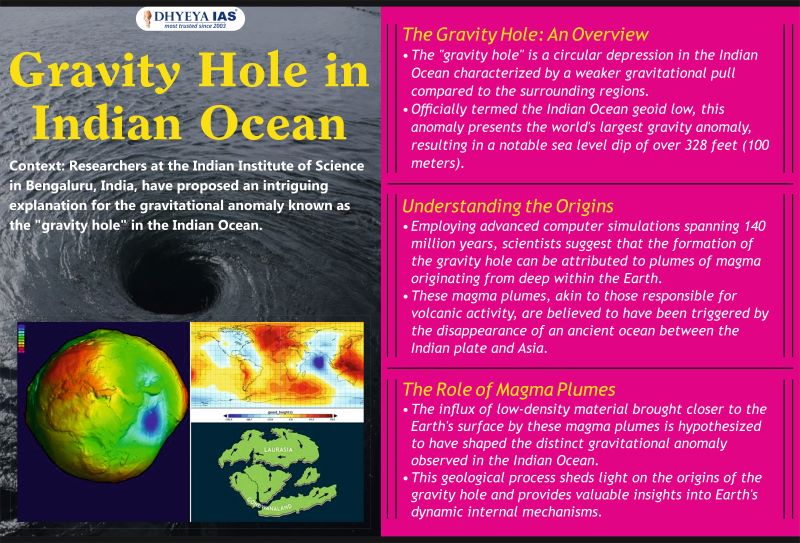Context
Researchers at the Indian Institute of Science in Bengaluru, India, have proposed an intriguing explanation for the gravitational anomaly known as the "gravity hole" in the Indian Ocean.
The Gravity Hole: An Overview
The "gravity hole" is a circular depression in the Indian Ocean characterized by a weaker gravitational pull compared to the surrounding regions. Officially termed the Indian Ocean geoid low, this anomaly presents the world's largest gravity anomaly, resulting in a notable sea level dip of over 328 feet (100 meters).
Understanding the Origins
Employing advanced computer simulations spanning 140 million years, scientists suggest that the formation of the gravity hole can be attributed to plumes of magma originating from deep within the Earth. These magma plumes, akin to those responsible for volcanic activity, are believed to have been triggered by the disappearance of an ancient ocean between the Indian plate and Asia.
The Role of Magma Plumes
The influx of low-density material brought closer to the Earth's surface by these magma plumes is hypothesized to have shaped the distinct gravitational anomaly observed in the Indian Ocean. This geological process sheds light on the origins of the gravity hole and provides valuable insights into Earth's dynamic internal mechanisms.






















